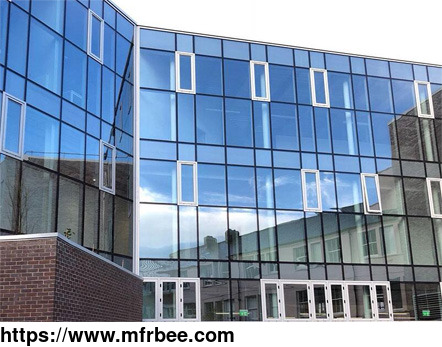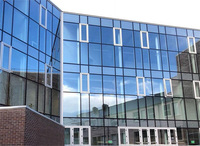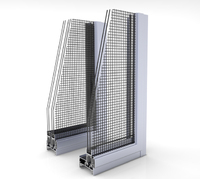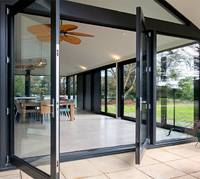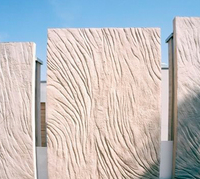curtain wall factory
curtain wall supplier / curtain wall manufacturer
unitized panel system
unitized curtain wall manufacturers / unitized curtain wall system manufacturers / curtain wall manufacturers / curtain wall system manufacturers
unitised curtain wall installation / unitized curtain wall installation / unitized curtain wall system installation
curtain wall manufacture
unitized curtain wall assembly
Curtain Wall
Unitised curtain wall systems are widely used around the world to clad medium and tall towers. Curtain wall panel systems are prefabricated off-site and shipped to site.
Types of Curtain Wall Systems
Unitized Curtain Wall
Curtain wall members like mullion, transom, glass, insulation, metal panel and related accessories, are processed and prefabricated as a complete panel in factory and send to jobsite for unitised
curtain wall installation. It obtain a short project schedule, lower field installation costs, better airtighness and waterproofness.
Stick Curtain Wall
Stick system curtain wall, which the members were pre-processed in factory and send to jobsite as parts, require a skillful stick curtain wall installation team. Subframe installation and glazing
both are done on-site. The weather sealant provide the major waterproof. It allows for easier detailing of connections and larger tolerances in the building structure.
Window Wall
Or unitized window wall system, spans only a single floor, is supported by the slab below and above, and is therefore installed within the slab edge. Like unitized curtain wall system, the window
frame, glass and related accessories were processed and assembled in window wall manufacturers and installed on-site panel by panel.
Stick Curtain Wall VS Unitized Curtain Wall Systems
The general option with curtain walls is selecting a unitized or stick system. In a stick system, the curtain-wall frame (mullions) and glass or opaque panels are installed and connected together
piece by piece. In the unitized system, the curtain wall is composed of large units that are assembled and glazed in the factory, shipped to the site, and erected on the building. Vertical and
horizontal mullions of the modules mate together with the adjoining modules. Modules are generally constructed one story tall and one module wide but may incorporate multiple modules.
Facade size: The larger the size, the more suitable option is unitized. Giving a rule of thumb, CAS advises unitizing for more than 5,000 square meters and sticking if the facade is less than 3,000
square meters, as there isn't enough space to achieve the economy of scale to justify unitized.
Degree of repetition: If the floor height is constant and the distance between mullions is repetitive, then breaking the facade into units of a similar size—as is the case with unitization—and
prefabricating them in the factory makes sense.
Shape and dimensions: Taller buildings above six floors are more suitable for unitized systems, but a low, extended building is a better fit for the stick.
Planarity: If dealing with flat, vertical walls, the on-site assembly of a stick system will be best. But once slope, three-dimensional slopes, and the like are added, the preference shifts to
unitized. According to Sola, the same applies for penetrations. The more brackets required for external sunshades, for instance, the more prefabrication is favored.
Allowance for structural movements: If the project is in a seismic zone and/or if shear or floor-to-floor movements are to be expected, then the ideal choice is unitized.
Unitized Curtain Wall System Benefits
Keep out the weather. First and foremost, curtain wall systems offer excellent weather protection. This not only improves the performance of the building but will increase its durability as well.
Resist water penetration. Curtain walls are designed to prevent water from penetrating the system and to keep the interior of the building dry.
Reduce building sway. Curtain walls are specially designed to disperse stress from sources such as high winds, improving the overall steadiness of the building.
Increase energy efficiency. By using glass that is treated and glazed properly, curtain wall systems can reduce the amount of heat lost or gained by a building. Better thermal efficiency can lead
to reduced energy consumption in the building.
Improve fire resistance. Curtain wall systems can help slow down the spread of fire by acting as a barrier and compartmentalizing a building. The specialized fire-resistant glass will help protect
occupants and the building itself.
Elevate building appearance. Glass curtain walls can create a classy appearance for both high-rise buildings and low-rise buildings.
Superior visuals. The large glass panels of a curtain wall improve visibility and increase natural light, making the interior of the buildings better too.
Versatile design options. Curtain wall systems can be designed and manufactured to a wide range of specifications to suit the specific aesthetic and practical needs of a project.
Why Casfacade As Your Curtain Wall Supplier?
CAS Facade is your facades, windows one-stop solution provider, and specialist. We own a professional design team, production team, and QAQC team with years of experience from the Permasteelisa
Group and Yuanda Group. Since set up in 2018, CAS has cooperated with lots of famous builders around the world.
CAS Facade can provide you:
Tender conceptual design;
VM/VE options;
Visual mock-ups, Performance Mockups;
Detail shop drawings with 3D modeling, up to LOD 400;
Facade systems structural and thermal calculations;
Onsite design and coordination meetings;
REG126 and FP1.4 certificate if required;
As for our current factory setup, we have:
12000 m2 modernized curtain wall workshop;
With total 3 independent production lines with 3 constant temperature glazing rooms;
Equipped with advanced CNC processing center;
FAQs of Curtain Wall
What Is The Difference Between A Window Wall And A Curtain Wall?
Simply put, the main difference between unitized curtain wall system and unitized window wall system is that the window wall system structurally sits between the suspended reinforced concrete slabs
while the curtain wall system is hung off the slab edges by anchors. ... A comparison is also made for the two systems' constructability, cost, and maintainability.
As one of unitized curtain wall manufacturers, we will do our best to meet all the needs of customers.
